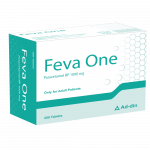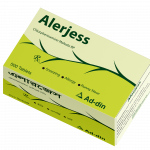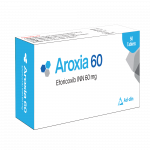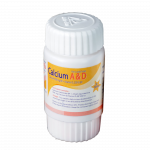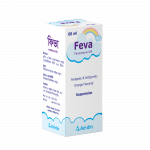Composition
Each film coated tablet contains Baclofen BP 10 mg.
Pharmacology
Relofen (Baclofen) is an effective muscle relaxant and antispastic agent with a spinal site of action. Its mode of action is not fully understood. Relofen (Baclofen) inhibits both monosynaptic and polysynaptic reflexes at the spinal level by stimulating the GABA receptors, which inhibits the release of glutamate and aspartate. It may also act at intraspinal sites producing CNS depression. Neuromuscular transmission is not affected by Baclofen. Relofen (Baclofen) also exerts an antinociceptive effect but the clinical significance of this is unknown.
Indication
- Pain of Muscle spasm
- Chronic Spasticity resulting from disorder such as multiple
sclerosis:
- Spinal Cord injuries and other spinal cord diseases
- Hiccup due to gastric distention
Dosage & Administration
Route of administration: By mouth
Adults:
Start therapy at low dosage and increase gradually until optimum effect is achieved (usually between 30-80 mg daily).
The following dosage titration schedule is suggested:
5 mg three times a day for 3 days
10 mg three times a day for 3 days
15 mg three times a day for 3 days
20 mg three times a day for 3 days
Thereafter additional increases may be necessary, but the total daily dose should not exceed a maximum of 80 mg daily (20 mg q.i.d).
Children:
Treatment should be started at a very low dose e.g. 0.3 mg/kg per day in divided doses. The dosage should be raised cautiously at 1-2 week intervals until it is sufficient for the child’s individual needs. The usual dosage range for maintenance therapy is 0.75 to 2 mg/kg body weight per day. In children aged over 10 years a maximum daily dose of 2.5mg/kg bodyweight may be given.
Contraindication
Known hypersensitivity to Baclofen.
Warning
1. Abrupt Drug Withdrawal:
Hallucinations and seizures have occurred on abrupt withdrawal of Baclofen. Therefore, except for serious adverse reactions, the dose should be reduced slowly when the drug is discontinued.
2. Impaired Renal Function:
Because Baclofen is primarily excreted unchanged through the kidneys, it should be given with caution, and it may be necessary to reduce the dosage.
3. Stroke:
Baclofen has not significantly benefited patients with stroke. These patients have also shown poor tolerability to the drug.
Precaution
Lower doses (approximately 5 mg per day) should be used for patients with impaired renal function or those undergoing chronic hemodialysis. Patients suffering not only from spasticity but also from psychotic disorders, schizophrenia, depressive or manic disorders or confusional states should be treated cautiously and closely monitored as exacerbations of these disorders may occur.
In patients with epilepsy and muscle spasticity, Baclofen may be used under appropriate supervision and provided that adequate anticonvulsive therapy is continued.
Baclofen should be used with caution in patients with or with a history of peptic ulcers, cerebrovascular diseases, or hepatic, renal or respiratory failure.
Careful monitoring of respiratory and cardiovascular function is essential especially in patients with cardiopulmonary disease and respiratory muscle weakness.
Side Effects
1. Common:
The most common adverse reactions associated with Baclofen are transient drowsiness, daytime sedation, dizziness, weakness and fatigue. Headache (<10%), insomnia (<10%), Hypotension (<10%), Nausea (approximately 10%), constipation (<10%), Urinary frequency (<10%).
2. Rare:
Euphoria, excitement, depression, confusion, hallucinations, paraesthesia, nightmares, muscle pain, tinnitus, slurred speech, co-ordination disorder, tremor, rigidity, dystonia, ataxia, blurred vision, nystagmus, strabismus, miosis, mydriasis, diplopia, dysarthria, epileptic seizures, respiratory depression. dyspnoea, palpitation, chest pain, syncope. dry mouth, anorexia, taste disorder, abdominal pain, vomiting, diarrhoea and positive test for occult blood in stool. enuresis, urinary retention, dysuria, impotence, inability to ejaculate, nocturia, haematuria.
Use in Pregnancy & Lactation
Safe use of Baclofen during pregnancy has not been established. Baclofen crosses the placental barrier. Baclofen should only be administered to pregnant women when in the judgment of the physician concludes that the potential benefits outweigh the possible hazards. Baclofen is excreted in breast milk however evidence to date suggests that the quantities are so small that no undesirable effects on the infant would be expected.
Children & Adolescents Use
Baclofen tablets are not suitable for use in children under 33 kg body weight
Drug Interaction
Increased sedation may occur if Baclofen is taken with agents acting on the central nervous system, alcohol or synthetic opiates. The risk of respiratory depression is also increased. Combined treatment with Baclofen and antihypertensive is likely to increase the fall in blood pressure; therefore the dosage of antihypertensive medication should be adjusted accordingly. The concomitant administration of Baclofen and tricyclic antidepressants may potentiate the pharmacological effects of Baclofen resulting in pronounced muscular hypotonia. In patients with Parkinsons disease receiving treatment with Baclofen and levodopa and carbidopa, there have been several reports of mental confusion, hallucinations, headaches, nausea and agitation.
The concurrent use of MAO inhibitors and Baclofen may result in increased CNS depressant effects. Caution is advised and the dosage of one or both agents should be adjusted accordingly. Caution should be exercised when administering Baclofen and magnesium sulphate or other neuromuscular blocking agents since a synergistic effect may theoretically occur.
Overdose
Symptoms of a Baclofen overdose include vomiting, weakness, drowsiness, slow breathing, seizures, unusual pupil size, and coma.
In the alert patient, empty the stomach promptly by induced emesis followed by lavage. In the obtunded patient, secure the airway with a cuffed endotracheal tube before beginning lavage (do not induce emesis). Maintain adequate respiratory exchange, do not use respiratory stimulants.
Storage
Store in a cool & dry place below 30°C. Keep away from light and moisture. Keep all medicines out of the reach of children.
Packing
Relofen 10 Tablet: Each box contains 10 X 3’s film coated tablets in blister pack.


